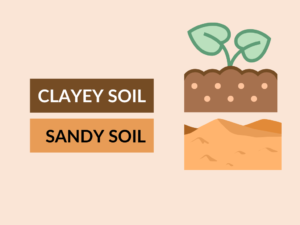Transpiration vs Guttation: Understanding the Differences
Transpiration and guttation are two essential processes that occur in plants, each serving different purposes. In this article, we will explore the differences between transpiration and guttation, providing examples, uses, and a comprehensive table for comparison. Read on to discover the fascinating world of plant biology!
What is Transpiration?
Transpiration is the process by which plants lose water through their leaves. It primarily occurs through small openings on the surface of leaves, known as stomata. These stomata open to facilitate the exchange of gases, such as carbon dioxide and oxygen, and water vapor is released as a byproduct.
Examples of Transpiration
Transpiration can be observed in various ways:
- Water droplets forming on the surface of leaves
- Wilting of plants during hot weather
- Water moving up the stems of plants against gravity
- Leaves glistening in the sunlight due to moisture loss
Uses of Transpiration
Transpiration serves several important functions in plants:
- Transporting water and essential nutrients from the roots to other parts of the plant
- Maintaining the structure and rigidity of plant cells
- Cooling the plant by releasing water vapor
- Assisting in the absorption of minerals and other substances from the soil
What is Guttation?
Guttation is a process where plants excrete excess water in liquid form through specialized structures called hydathodes. Unlike transpiration, which primarily occurs through stomata, guttation occurs through hydathodes, which are pores found in the leaf margins or tips. This process is most noticeable in humid conditions during the early morning or late evening when the soil is saturated with water.
Examples of Guttation
Guttation can be observed in various plant species:
- Formation of water droplets on the tips of grass blades in the morning
- Dew-like water on the surface of certain plant leaves
- Exudation of liquid from special leaf structures in some succulent plants
Uses of Guttation
The functions of guttation in plants are still not fully understood, but it is believed to serve the following purposes:
- Excreting excess water to prevent damage to plant tissues
- Transporting nutrients and metabolic waste products within the plant
- Potentially deterring herbivores with the exuded liquids
Differences between Transpiration and Guttation
| Transpiration | Guttation | |
|---|---|---|
| Difference Area | Occurs through stomata | Occurs through hydathodes |
| Location | Primarily on leaf surfaces | Leaf margins or tips |
| Time of Occurrence | Throughout the day | Early morning or late evening |
| Water Loss | Primarily in vapor form | In liquid form |
| Triggering Factors | Temperature, humidity, light intensity | Excess soil moisture |
| Function | Water and nutrient transport, cooling, gas exchange | Excretion, potential deterrence, internal transport |
| Observation | Water droplets on leaves, wilting, glistening leaves | Water droplets on leaf tips, exudation from hydathodes |
| Occurrence Conditions | Hot, dry weather | Moist soil, high humidity |
| Universal Process | Occurs in all plants | Does not occur in all plants |
| Role in Plant Survival | Essential for plant survival and growth | Role is still not fully understood |
Conclusion
In summary, transpiration and guttation are two distinct processes in plants. While transpiration involves the release of water vapor through stomata, guttation releases excess water in liquid form through hydathodes. Transpiration occurs throughout the day and is essential for plant survival, whereas guttation happens during specific conditions and its exact functions are not yet fully understood.
People Also Ask
1. What factors affect transpiration and guttation?
Temperature, humidity, light intensity, and soil moisture are some of the factors that affect both transpiration and guttation.
2. How can transpiration and guttation be beneficial to plants?
Transpiration helps in water and nutrient transport, cooling the plant, and gas exchange. The benefits of guttation are still being researched, but it may aid in excreting excess water, transporting nutrients, and potentially deterring herbivores.
3. Can guttation be observed in all plant species?
No, guttation does not occur in all plant species. It is more common in herbaceous plants and can be influenced by environmental conditions.
4. How do plants prevent excessive water loss during transpiration?
Plants regulate transpiration through the opening and closing of stomata, reducing water loss during periods of high temperature or low humidity.
5. Are transpiration and guttation related to each other?
While both processes involve the release of water, they are distinct and regulated by different mechanisms. Transpiration occurs primarily through stomata, whereas guttation occurs through specialized structures called hydathodes.


